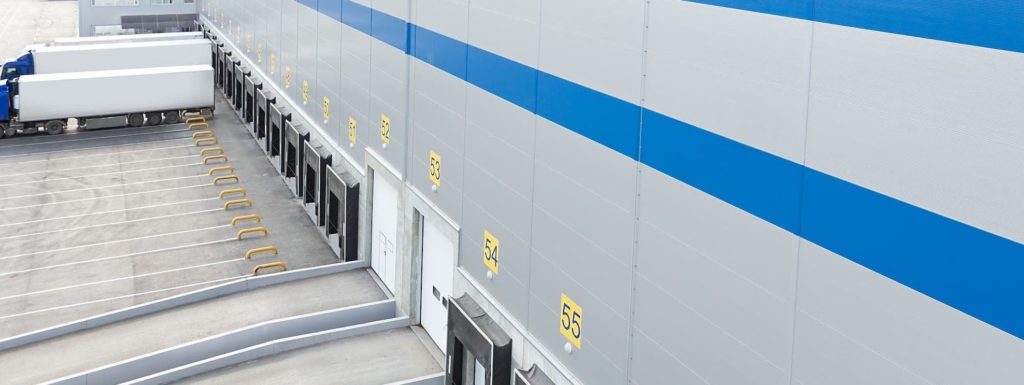In today’s fast-paced logistics environment, the efficiency of yard operations is more crucial than ever. A common yet significant issue that disrupts this efficiency is the problem of trucks waiting in yards. This not only affects the logistics companies but also has wider economic and environmental impacts. Peripass, with its innovative yard management software, presents a solution to this pressing challenge.
Understanding the Problem
Trucks waiting in yards is a symptom of deeper logistical inefficiencies. Causes range from scheduling conflicts, where multiple trucks arrive simultaneously due to poor planning, to inadequate yard management systems that fail to provide real-time data and guidance. Imagine a scenario where a fleet of trucks arrives at a distribution center, only to find no available loading docks. This leads to a cascade of delays, affecting not just one but several supply chains.
Consequences of trucks waiting in the yard
Economic Impact
The economic implications of waiting trucks are significant. Idling trucks mean wasted fuel, which translates to increased operational costs. Moreover, driver time is a valuable resource; having drivers wait in yards leads to overtime costs and, in some cases, penalties for delayed deliveries.
Operational Impact
Yard congestion, a direct result of trucks waiting, significantly disrupts the efficiency of loading and unloading processes. The immediate consequence is reduced throughput, leading to cascading delays throughout the supply chain. Furthermore, this situation creates a stressful environment for your team, particularly those at the reception and dispatch desks.
As trucks line up in the parking lot, the pressure mounts. Drivers, growing impatient and frustrated, frequently approach your team with complaints. They often observe trucks that arrived after them being serviced first, leading to further dissatisfaction and repeated solicitations for updates. This not only strains your staff but also disrupts their workflow, compounding the operational inefficiencies already plaguing the yard.
Safety Impact
The mounting pressure from trucks lining up in the parking lot has significant safety implications. In efforts to alleviate congestion, trucks are sometimes allowed onto the site prematurely, before the warehouse team is fully prepared. This rushed decision-making can lead to hazardous conditions in the yard.
Occasionally, drivers, driven by frustration and the need to maintain their schedules, may resort to forceful tactics such as blocking the entryway with their trucks. This leaves the yard management team with little choice but to service these vehicles, effectively transferring the congestion from the parking lot to the yard.
Such scenarios increase the likelihood of dangerous maneuvers within the yard. With trucks moving unpredictably and space at a premium, the risk of material damage escalates. More importantly, these conditions significantly raise the potential for accidents involving personnel. The safety of staff and visitors becomes compromised, turning the yard into an area where the slightest miscalculation or miscommunication can lead to serious incidents.
Addressing these safety concerns is not just about improving operational efficiency; it’s about ensuring a safe working environment. This underlines the need for a robust yard management system like Peripass, which can effectively organize yard traffic and prevent such dangerous scenarios.
Environmental Impact
Idling trucks contribute to increased carbon emissions, negatively impacting the environment. This is an often overlooked but important consequence of yard inefficiencies.
Exploring Solutions to Minimize Yard Congestion
Before discussing the specific capabilities of Peripass, it’s important to consider the range of strategies available to address the issue of trucks waiting in the yard. These approaches can vary in complexity and effectiveness:
- Improved Scheduling Systems: Implementing more sophisticated scheduling tools can help evenly distribute truck arrivals, thereby reducing peak congestion.
- Enhanced Communication Protocols: Establishing clear communication channels between drivers, dispatch teams, and warehouse staff can mitigate misunderstandings and reduce unnecessary waiting times.
- Yard Layout Optimization: Reevaluating and redesigning the yard layout to maximize efficiency and flow can significantly reduce congestion. This might involve redesigning entry and exit points, loading docks, and parking areas.
- Driver Management: Creating comfortable waiting areas for drivers and implementing systems to keep them informed about their status can help manage their expectations and reduce stress-induced behavior.
- Staff Training and Protocols: Training staff to handle peak times efficiently and developing protocols for unexpected surges in truck arrivals can help in maintaining order and safety.
Each of these solutions offers a way to tackle the issue, but often, a combination of these strategies is necessary to effectively manage yard congestion. This sets the stage for introducing a comprehensive solution like Peripass, which integrates many of these approaches into a single, cohesive system.
Peripass as a Solution
Peripass’s yard management software offers a suite of features to tackle these challenges. By providing real-time yard visibility, automated scheduling, and efficient dock management, Peripass reduces the time trucks spend waiting. This optimization leads to smoother operations, cost savings, and a reduced carbon footprint. Testimonials from businesses that have implemented Peripass highlight significant improvements in their yard efficiency.
Conclusion
The issue of trucks waiting in yards is more than just a logistical challenge; it’s a critical bottleneck that affects economic viability, operational efficiency, and environmental sustainability. Peripass offers a comprehensive solution to this problem, ensuring that your yard operations are as efficient and effective as possible. For more information or to schedule a demo, contact Peripass today.


